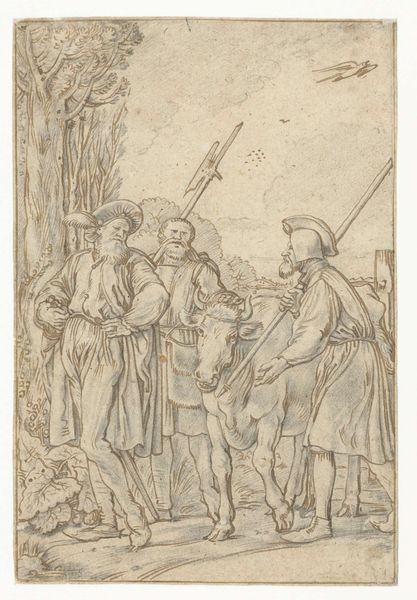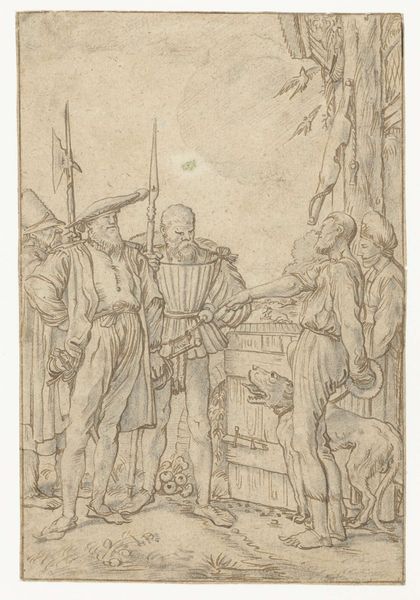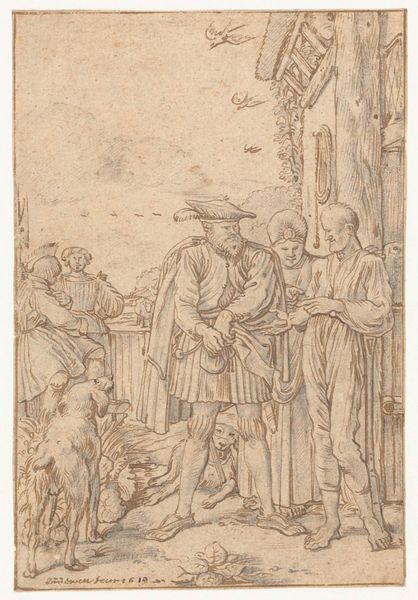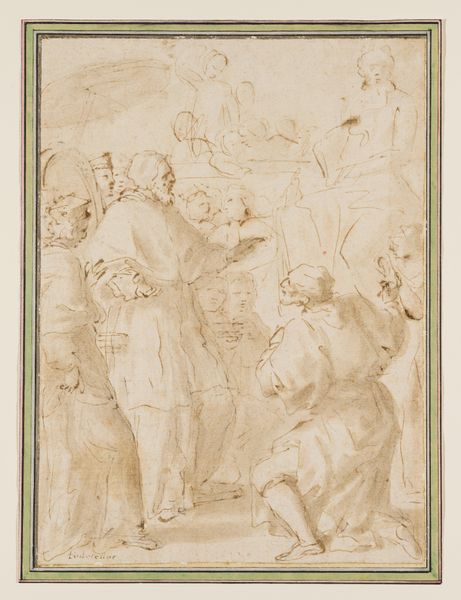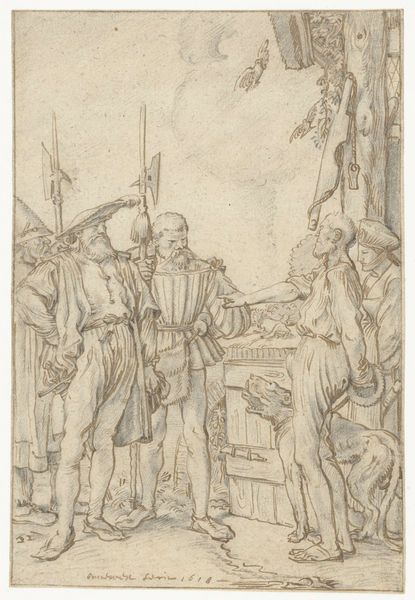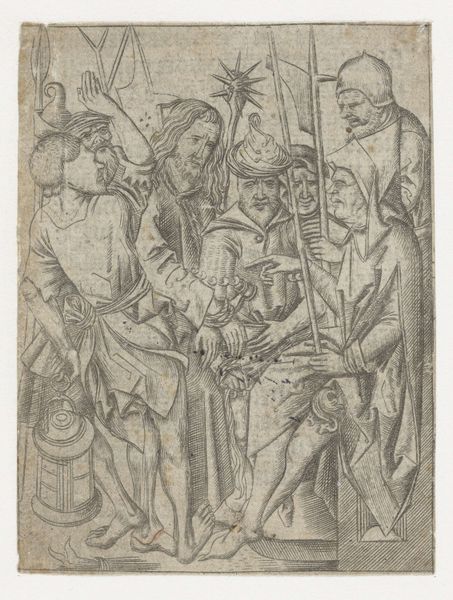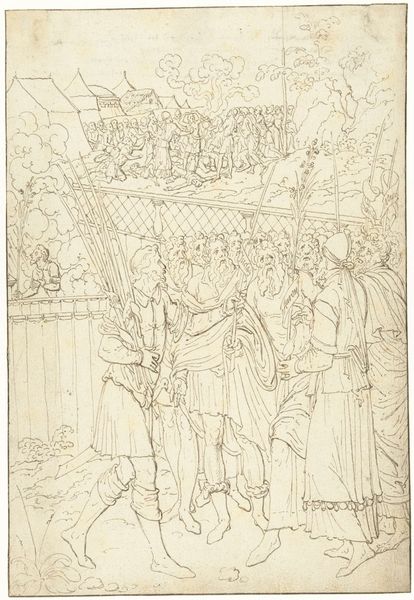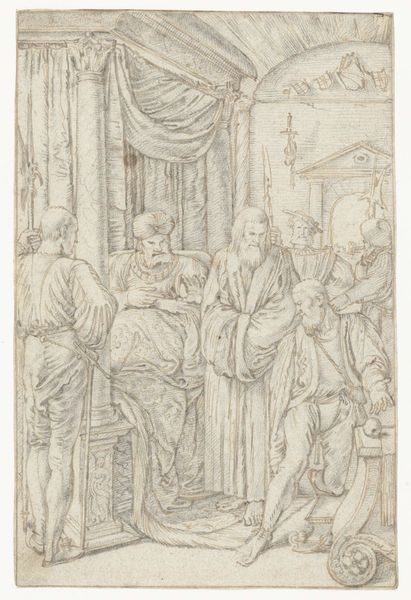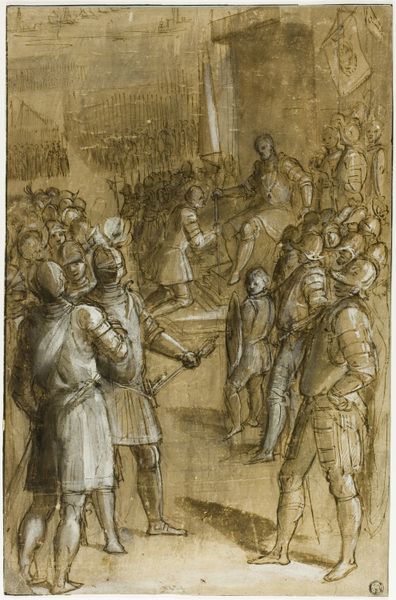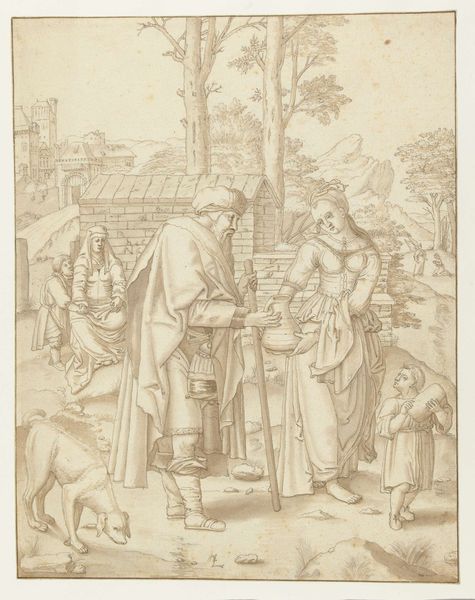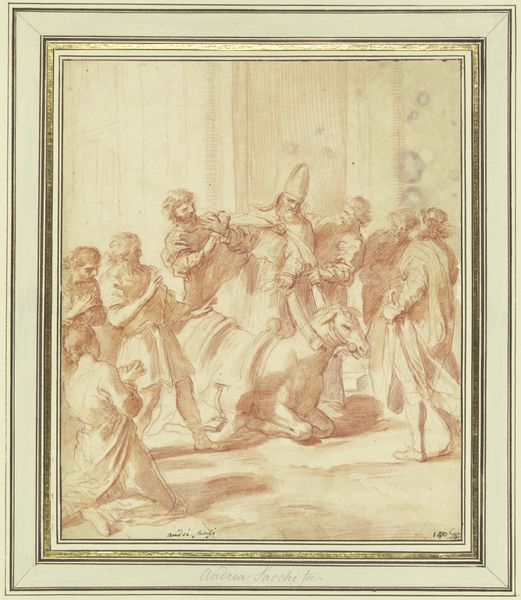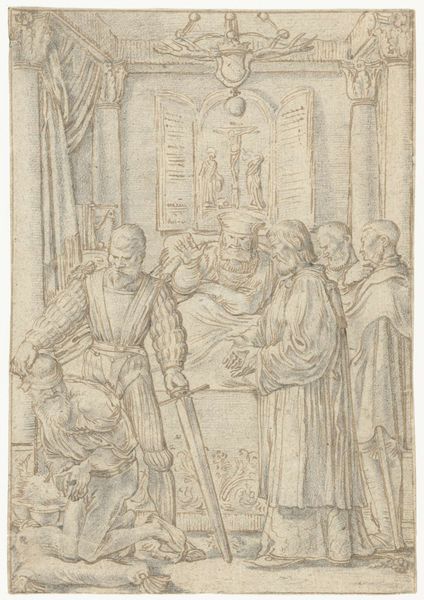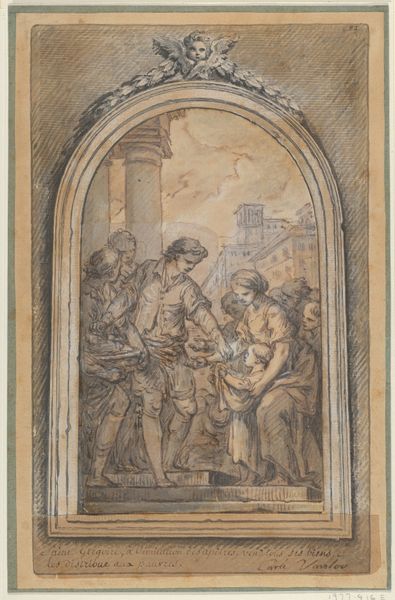
drawing, etching, paper, pencil
#
portrait
#
drawing
#
dutch-golden-age
#
etching
#
landscape
#
figuration
#
paper
#
pencil
#
line
#
genre-painting
#
history-painting
Dimensions: height 161 mm, width 107 mm
Copyright: Rijks Museum: Open Domain
Editor: This is Willem Buytewech's "Schout van Dordrecht ontvangt de brief van de graaf", made around 1619. It's an etching, pencil, and pen drawing on paper. It’s quite a busy composition, full of figures, and gives off an official, slightly tense feeling. What historical context is important in understanding this image? Curator: A crucial element is understanding the socio-political environment of the Dutch Golden Age. Buytewech was working in a period where the Dutch Republic was solidifying its independence. The very act of depicting a local official receiving correspondence from a count highlights evolving power dynamics. Who is in control of the territory depicted, and who answers to whom? Editor: That's interesting, I hadn't considered the subtle implications of the letter itself. So the piece might be interpreted as a statement about local authority versus external powers? Curator: Precisely. The fact that this scene is chosen as a subject indicates a cultural interest in these new social configurations. Look at the figures' dress; their stances, where the focus is. Also consider the setting: is it overtly opulent or more functional, signaling a practical administration? The print could be seen as an assertion of the local Schout’s importance and of his authority to interpret this correspondence. It certainly reflects the political values of the rising Dutch Republic. Editor: It does make me consider who would have viewed or owned such a print back then and how this affects its interpretation today. Did such prints circulate widely, thus amplifying these political messages? Curator: Exactly. Its existence challenges conventional ideas of powerful leadership during this era. So what does that tell us about its purpose, about art's purpose at that moment in the shaping of national identity? Editor: Thinking about the piece as less about a single leader and more about societal change really reframes my understanding. It’s fascinating to see how a seemingly simple image can reveal so much about the culture and politics of its time. Curator: Agreed, art in any era mirrors the community that sanctions it, perpetuates communal dreams and desires. Thanks for highlighting it!
Comments
No comments
Be the first to comment and join the conversation on the ultimate creative platform.
